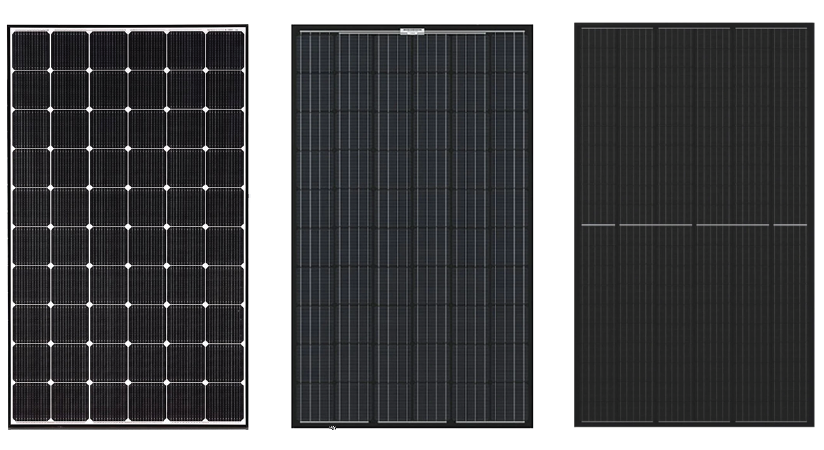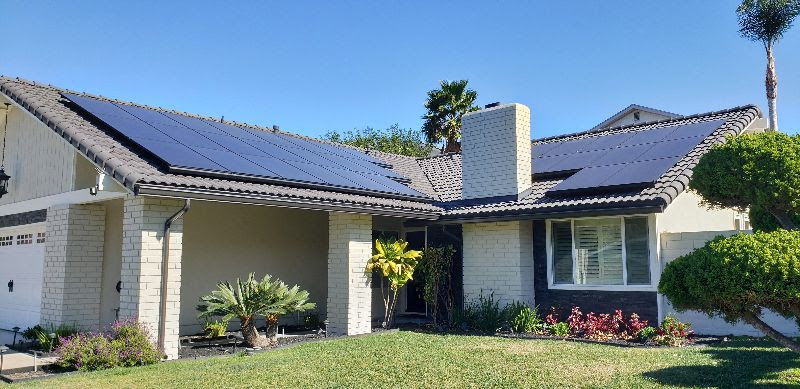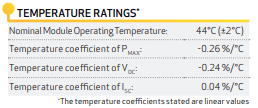| You’re thinking now is a good time to invest in solar energy. The utility bills are out of control. Everyone is at home more often, and the air conditioner runs almost 24/7. Appliances and electronic gadgets on top of all the lights in the house seem like they’re on all day long. And to top it off, the utility company continues to raise the price of electricity so the bills are ridiculously high. Making a commitment to alternative energy like solar is a great idea, especially with today’s federal tax break of 26%. But don’t get yourself into a solar system too quickly with the cheapest thing that pops up. The attitude that “all solar panels are the same” is the wrong approach to getting solar. After all, solar is a substantial financial commitment so you’ll want to know that the panels installed on your roof will not only look great but will perform to your exact specification. There are many solar panels available on the market offered by various manufacturers, and each one differs in cosmetics and performance. So, what should one look for when it comes to panels? There are a few parameters you should pay attention to. LOOKS CAN BE DECEIVING  Aesthetics may or may not be a big factor. The look of a solar panel can be a personal preference, but know that more and more manufacturers are now paying attention to the appearance of their products when it comes to their residential offerings. That’s because solar is becoming much more than just energy, it’s also evolved into a cosmetic statement for the home. And depending on where panels are installed, homeowners want to make sure they’re visually pleasing. After all, these are large objects, and they don’t want the solar panels to distract much from their home’s natural curb appeal. Solar panels are traditionally known to have a certain look: thick aluminum frames and white-outlined waffle squares. Some may feel the typical panel aesthetic is unsightly, preventing their commitment to solar no matter how much money they’ll save. For this reason, manufacturers have greatly improved their appearance making them thinner and utilizing black frames that make them look more modern and sleek. For instance, the REC Twin Peak Series and Canadian Solar HIDM-Black products we offer feature black frames but still utilize the white backing which actually helps in cooling and power efficiency. If there’s still too much white for someone’s taste, manufacturers like Solaria and REC offer a premium line of full black panels. REC uses a black polymetric back sheet for a unified solid look while Solaria uses a Pure Black technology to give homeowners a darker elegant finish. Solar panel cosmetics have come a long way with more choices. For solar panel installations that aren’t visible from ground level, a premium upgraded panel wouldn’t be worth it simply for their appearance. However, for more prominent installs that are front-facing, black-bordered and pure black panels may be the way to go. Solar Power Supply always considers panel placement and will always offer ideal panels as an option to homeowners.  PERFORMANCE When it comes to solar panel energy production, there are key specifications worth looking at. These factors include power, efficiency, and temperature coefficient. This set of parameters plus more determines what the entire system will achieve when it comes to overall power for your home. This information is technically what you’re paying for when purchasing a solar power system. Power Solar panels have output power ratings represented in Watts. That number determines the panel’s expected electricity production under ideal conditions. Today’s solar panels easily produce 300+ Watts of power with our offerings reaching all the way up to 400 Watts, such as the Solaria PowerX 400R. Higher power-producing panels allow you to install less panels when more energy is needed but limited in roof-top space. A panel’s higher output rating is due to certain factors such as physical size and technology. A larger panel enables manufacturers to place more cells in the panel, resulting in more power production. But output will still depend on other elements such as shade, face angle, temperature, and daylight hours. These aspects are usually factored in when a quote is provided by a solar company. Solar panels are rated by the amount of direct current (DC) power they can produce which is ultimately converted into alternating current (AC) that’s used in our homes. Solar quotes are often given in dollars-per-watt so you’ll be able to gauge the total cost of your system based on your yearly wattage usage. While power output is very important, it doesn’t determine the panel’s actual quality or superiority. However, paying attention to a panel’s power rating combined with its efficiency is a great start in assessing its performance capabilities. Efficiency The efficiency rating of a solar panel is also a very important aspect, sometimes considered more significant than their high-power output rating. The efficiency rating is the solar panel’s ability to turn sunlight into electricity. The rating involves its composition, design technology, and more. Most solar panels today have efficiency ratings between 15-20% with several brands/models producing 1-2% more. The high-quality panels we offer have at least 19% efficiency ratings and with several over the 20% range, such as Panasonic, LG, Solaria, and REC. Make sure to check out the efficiency specification of the solar panels on a given quote. Keep in mind you may be paying for more panels that are “less-efficient” compared to paying for less panels that are “higher-efficient” to obtain the same kilowatt-hours (kWh) goal. For example, given the same size panels and power ratings applied in identical environmental conditions, one with 20% efficiency compared to another at 15% efficiency will actually yield almost 50% more kWh of electricity. So, the extra cost may be worth the expense. A higher-efficiency panel may also be deemed better suited for rooftops with limited space. Temperature Coefficient The temperature coefficient of a solar panel is related to its productivity under varying temperatures. You may think solar panels produce more power on hotter days, but solar panels work best when they are cool, just like any electronic device. The power rating of solar panels is measured typically at a general temperature of 25 degrees Celsius (77° Fahrenheit). And there is a typical power loss of 1% for every 2° Celsius above the 25° C temperature rating.  Take for instance the -0.26%/°C temperature coefficient of our REC Series (370W). On a hot SoCal summer day at 37.7° C (100° F), the power loss is equated at:
It’s unlikely you’ll really go through all these calculations, but these specs may be your determining factor for which panels to pick from your solar company. Some companies may not have a range of solar panels to choose from and you’re stuck with what they give you. The “Oh look, this company is selling solar for so cheap,” isn’t always the best way to decide on the solar panel system for your needs. Knowing which solar specs to look out for as well as their appearance may be the difference between going with company A versus company B. Call us today for a free quote on an ideal solar energy system and check out the solar panels we have to offer at www.solarpowersupply.net. We’re confident we’ll be able to provide you with a high-quality system that’s perfect for your needs. |
 |
| Put money in your pocket by simply referring us to friends, family, and coworkers. Even if you don’t own a solar system, you can still refer someone who can benefit from solar technology. Simply click here to download the Solar Power Supply advocator app (available for Android and iOS devices). Once you download the app, input contacts who may be interested and we’ll do the rest. As soon as any of your referrals sign up with us for a new solar power system, we’ll automatically send you $500. It’s that easy to put cash back in your pocket. |



Recent Comments